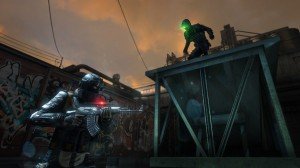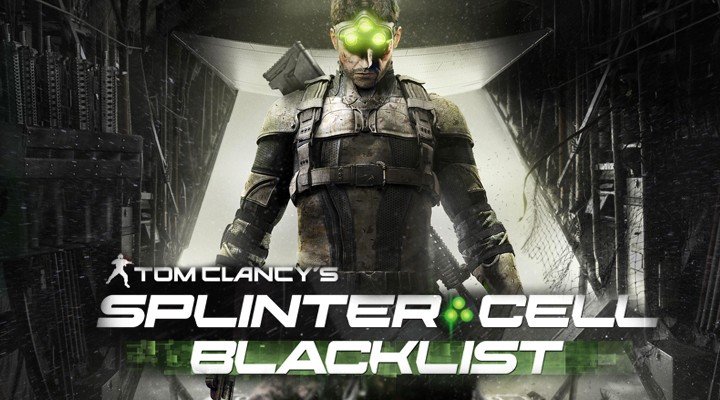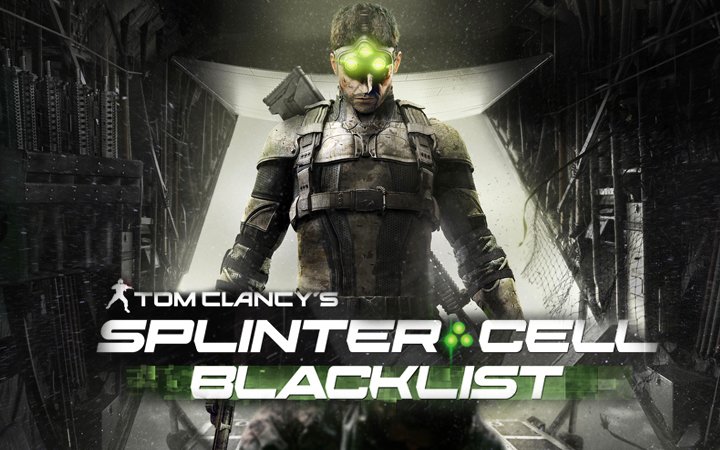After a frankly stupid amount of pre-release trailers and press-baiting teasers, the new Splinter Cell is finally here amidst the weeks where the industry kicks back before the run-up to Xmas.
Was it worth the wait? Oh, hell yes.
For any of the uninitiated, check our overview of the franchise so far to get caught up to speed; for the rest of you, this is the Splinter Cell you’ve been waiting for ever since those press shots emerged in 2007 of main man Sam Fisher looking disheveled and outcast. Blacklist sees a triumphant return to the Splinter Cell of old by way of injecting fun, arcade-style scoring mechanics to a gameplay system built on the pendulum swing of adrenaline thrills and shadow-stalking tension. There are a few moments where the game forces you down either route for the sake of narrative, but rest assured, the overall execution of these set-pieces along with the laser-tight control you now have over Sam’s every movement pump a renewed sense of adrenaline into the series’ stealthy heart.
Missions are accessed from a central, interactive hub-world taking the form of the Paladin, Sam’s aircraft HQ. You’re free to explore the Paladin as you see fit, Mass Effect-style, talking to long-time fan-favorite Anna Grimsdottir (this time voiced by Kate Drummond) alongside your fellow Cell operative Isaac Briggs, data-analyst Charlie Cole, and a certain returning criminal you bring onboard, all unlocking further equipment options that flesh out your tactical options in the field. The level of customization is pretty mind-blowing when you first take a scroll through everything from customizable sticky-cams and different suit types that are split into specific body parts, to changing the colour of the lights on Fisher’s goggles (however, anything other than green is just plain wrong!).
Controversially, Sam Fisher is now voiced by actor Eric Johnson instead of long-time series regular Michael Ironside. Whilst you may have had a certain attachment to Ironside’s handling of the character with his trademark growl and witty remarks, it has to be said that Johnson fits the new bill perfectly, projecting a Fisher consumed in his professional work to the point of detriment.
Setting aside the incongruous chronology the series has put upon itself by refusing to age Sam appropriately, what’s on offer here is a mix of the most white-knuckle scenes from 24 complimented by a big dollop of Mission: Impossible’s gadgets, all wrapped up in a surprisingly engaging narrative.
Taking on board the likes of Johnson and Drummond has allowed Ubisoft to essentially film a mini-movie, wrapping all their favorite action tropes into one awesome package of super-villainy and espionage, complete with ‘the comic-relief-nerdy-support-character’ and ‘the-gruff-badass-with-a-heart-of-gold’. Whether or not you just groaned at that description will be the determining factor behind your overall enjoyment of the main campaign, but it has to be said that this is a tale driven by great characters that moves at a hefty pace, and it’s a marked step up from anything that’s gone before.
Another huge step up is that of tighter controls that compliment the new score-system reminiscent of the one in Hitman: Absolution. Each hidden route, gadget-use, and lethal/un-lethal kill earns you points for each mission, a total that is bulked up by going out of your way to find hackable laptops or capturing certain ‘high value target’ NPCs. At the end of each mission, you’ll receive a debrief of how well you fed into each of the newly implemented play-styles: Ghost, Panther or Assault. Ghost is your vintage style of avoidance and essential guard knockouts, and the one that reaps the richest rewards, but if you have a penchant for throat-slicing and tear gas, Panther is your mix of the two. Assault, however, favors all-out warfare by letting you kick doors in and leave proximity mines on guard patrol routes. Whilst this is a huge amount of fun and a perfect stress-reliever when best laid plans go skyward, Splinter Cell is best played in its original vision, and Ubisoft has found the perfect mix of old and new, instilling that ‘one-more-go’ mentality amongst a plethora of worthwhile approaches and expositional drive.
Rejoining the gameplay mixing pot is Conviction’s ‘Mark and Execute’ mechanic, a gauge that fills up with either a combination of distance takedowns or one melee kill, allowing you to tag another three guards and take them out with one button press. Combing rooms through surveillance equipment and marking guards before busting in affords you just the right amount of power in the face of a varied opposition who will use dogs and drones to snuff you out.
With such refined mechanics, they’ll be tested to the absolute limit in the excruciatingly hard side-missions that accompany the main thread. There’s everything from stealth-focused ‘get-in-get-out’ data-hacking missions, where discovery means game over and a teeth-gritting restart, to a Gears-aping horde mode, where you survive waves of guys by either going all guns blazing or utilizing some very fast stealth tactics to drop in and out of the shadows.
Each mission outside the main thread can be tackled with a friend either locally or over Xbox Live, and with certain paths and missions being co-op only, partnering up to have each other’s back is another returning feature that’s great fun. It has to be said these missions are very hard, primarily because on the former stealth missions, you only have one checkpoint for the entire level, meaning that traversing crisscrossed laser grids and rooms of patrols is an exercise in remembering to breathe. That being said, it’s refreshing to see a big-budget game pull no punches in reminding everyone what made Splinter Cell so damn enjoyable in the first place, and like the olden days, you’ll be pushing the ‘Restart Checkpoint’ button over and over, muttering to yourself about how you, ‘can do that better this time’. This aspect may put off newcomers to the franchise, but in a world where developers are continually curtailing advanced gameplay to appeal to the lowest common denominator (Hey there, Mass Effect 3), this is a game made for longtime fans of the franchise, presenting a learning curve that veterans will love to get stuck into, yet may dissuade the rest from ever going anywhere near the stealth-only levels.

One of those rare gigs where the support is just as good as the main event – the return of Spies vs. Mercs multiplayer!
With guard patterns changing and different units being deployed upon any retry, Blacklist provides a constant challenge and keeps you on your toes, but rest assured, these controls were built for advanced play. Every time you react with lightning proficiency to dispatch a room full of guards in a cloud of sleeping gas and champagne-cork-popping headshots, the resulting collective clump of bodies hitting the floor is nothing short of euphoric.
The final crowd-pleaser of the night is the return of the asymmetrical multiplayer ‘Spies vs Mercs’, rounding off the package nicely. For those who want to take all the enhancements of the main game and pit them two on two against two heavily armed infantry guys, the beauty of this mode is Mercs play first-person, Call of Duty-style, whereas Spies are essentially the same as Sam, sans marking and executing targets.
Multiplayer in past Splinter Cell games Pandora Tomorrow and Chaos Theory ate up a whole lot of evenings for fans, and it’s re-imagining here is sure to do exactly the same for a whole new generation.
With so much going on, however, Blacklist does suffer on a technical level, as even with the optional HD texture pack installed (on the 360 version), the game still shows low-res contextual button-prompts and texture load-in, alongside some pretty glaring screen-tearing during cut scenes. Luckily, the frame rate is solid as a rock during even the most frantic combat scenarios, saving the whole game from being bogged down under too lofty an ambition.

Overall, this feels like the next ‘proper’ installment in the franchise, as Double Agent was developed during the last console-crossover, having mechanics divided between both versions, and Conviction’s action-heavy aesthetic didn’t sit well with longtime fans, nor was it committed enough to attract new ones.
Blacklist acknowledges all past failings by re-appropriating them into a game that allows you full creative freedom over how you approach levels and rewards you accordingly. With robust, fan-favorite multiplayer options and a strong narrative that leans on established, crowd-popping plot points and brainiac jargon, this installment challenges Chaos Theory as the best stealth-action game out there.
This review is based on a retail copy of the Xbox 360 version of Splinter Cell: Blacklist by Ubisoft Toronto, distributed by Ubisoft




